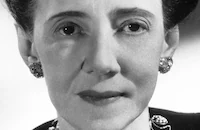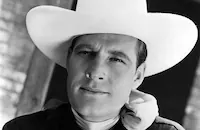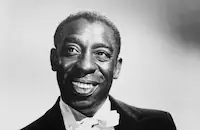So Red the Rose
Brief Synopsis
Cast & Crew
King Vidor
Margaret Sullavan
Walter Connolly
Randolph Scott
Janet Beecher
Elizabeth Patterson
Film Details
Technical Specs

Synopsis
In 1861 at the Portobello plantation in Mississippi, Valette Bedford is in love with her cousin Duncan and flirts incessantly with him to draw his attention. Duncan plays cool, however, treating her as if she were a young child. Out of spite, Valette pretends to fall madly in love with her brother Edward's Texan friend, Archie Pendleton. When Archie proposes to her, she is flabbergasted and does not respond definitively, but as he is dashing off to the Civil War, he assumes that she will be waiting for him. Edward stays behind at the urging of his family, but later comes to regret his decision when he finds out Archie has been honorably killed in battle. Edward then leaves with his father's blessing. Duncan, however, refuses to fight his Northern neighbors on the grounds that many of them are friends and Americans should not fight Americans. Valette becomes disgusted by his attitude and believes it only covers cowardice. After some Yankees kidnap Valette's father Malcolm as a guide, he returns determined to go to war. After Malcolm leaves, his wife Sally has a vision of her son Edward dead on the battlefield, and accompanied by Duncan and her faithful black slave, she goes to find his body. Prior to his leaving, Valette had apologized to Duncan and had pledged her love for him. Moved by the sight of the battlefield strewn with slain Confederate soldiers, Duncan marches off to war with a battle cry, leaving Sally and William to return Edward's body. News reaches the Bedford slaves that General Ulysses S. Grant has taken Vicksburg, and their excitement leads them to revolt against their work. A wounded Malcolm then arrives home and dies, after which Sally, heartbroken, frees their slaves. Sally, her little son Middleton, Valette and their cousin Mary maintain the house, helped by William, until Yankee soldiers invade the mansion. Valette takes pity on one young Yankee soldier who, although originally intending to rob them, has been injured and is being hunted by Confederate soldiers. She dresses him in her brother's uniform and puts him to bed, and is astonished to discover that one of the pursuing Confederate soldiers is Duncan. Duncan has changed markedly--he is no longer a pacifist--and Valette must plead for the boy's life. Although Duncan protects him, the boy dies and the family is thrown out of their own house when the Yankees set fire to it. Duncan then rejoins his troops. By the war's end, the much-reduced family is living in a small house and cooking on an outdoor stove. One day, Valette hears Duncan calling to her, and they reunite in the woods.

Director

King Vidor
Cast

Margaret Sullavan

Walter Connolly

Randolph Scott

Janet Beecher

Elizabeth Patterson

Robert Cummings
Harry Ellerbe

Dickie Moore

Charles Starrett
Johnny Downs
Daniel Haynes

Clarence Muse

James Burke
Warner Richmond
Alfred Delcambre
Emma Reed
Edward Gargan
Alex Hill
Luke Cosgrove
Leroy Broomfield
Oscar Smith
Kid Herman
John Larkin
Charles Morris
Billy Mcclain
E. H. Calvert
Stanley Andrews
David Newell
Alden Chase
Paul Parry
Baron Lichter
Hal Craig
Duke York

Lloyd Ingraham
Dick Allen
Crew
Maxwell Anderson
Travis Banton
Hans Dreier
Ernst Fegte
W. Franke Harling
Elizabeth Hill
Vernon Keays
Harold C. Lewis
Douglas Maclean
Edwin Justus Mayer
Louis H. Mesenkop
Victor Milner
Laurence Stallings
Eda Warren
Adolph Zukor

Film Details
Technical Specs

Quotes
Trivia
Notes
A Daily Variety news item noted that in an effort to hasten production, director King Vidor had his wife, writer Elizabeth Hill, direct some scenes with Margaret Sullavan, while he directed crowd scenes. According to copyright records, William G. Beymer acted as Southern adviser, and William H. Hazell, who served in the Civil War, reproduced antiques from that era. A production still from the film indicates that father and daughter actors Maurice and Helene Costello appeared in the wedding scene of the film, but they were not identified on the viewed print. The film reportedly cost $1,000,000 to produce. The United Daughters of the Confederacy contributed information for the production. Paramount borrowed Margaret Sullavan from Universal for this film. According to a Daily Variety news item, some scenes were shot on location at Sherwood Lake, CA.












